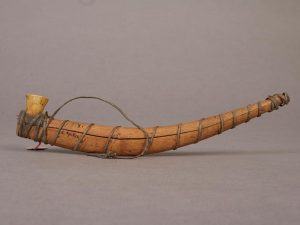Lorraine Boissoneault in Smithsonian:
 In the beginning, there was smoke. It snaked out of the Andes from the burning leaves of Nicotiana tabacum some 6,000 years ago, spreading across the lands that would come to be known as South America and the Caribbean, until finally reaching the eastern shores of North America. It intermingled with wisps from other plants: kinnickinnick and Datura and passionflower. At first, it meant ceremony. Later, it meant profit. But always the importance of the smoke remained.
In the beginning, there was smoke. It snaked out of the Andes from the burning leaves of Nicotiana tabacum some 6,000 years ago, spreading across the lands that would come to be known as South America and the Caribbean, until finally reaching the eastern shores of North America. It intermingled with wisps from other plants: kinnickinnick and Datura and passionflower. At first, it meant ceremony. Later, it meant profit. But always the importance of the smoke remained.
Today, archaeologists aren’t just asking which people smoked the pipes and burned the tobacco and carried the seeds from one continent to the next; they’re also considering how smoking reshaped our world. “We teach in history and geology classes that the origins of agriculture led to the making of the modern world,” says anthropologist Stephen Carmody of Troy University. “The one question that keeps popping up is which types of plants were domesticated first? Plants that would’ve been important for ritual purposes, or plants for food?” To answer that question and others, Carmody and his colleagues have turned to archaeological sites and old museum collections. They scrape blackened fragments from 3,000-year-old pipes, collect plaque from the teeth of the long-dead, and analyze biomarkers clinging to ancient hairs. With new techniques producing ever more evidence, a clearer picture is slowly emerging from the hazy past.
More here.
